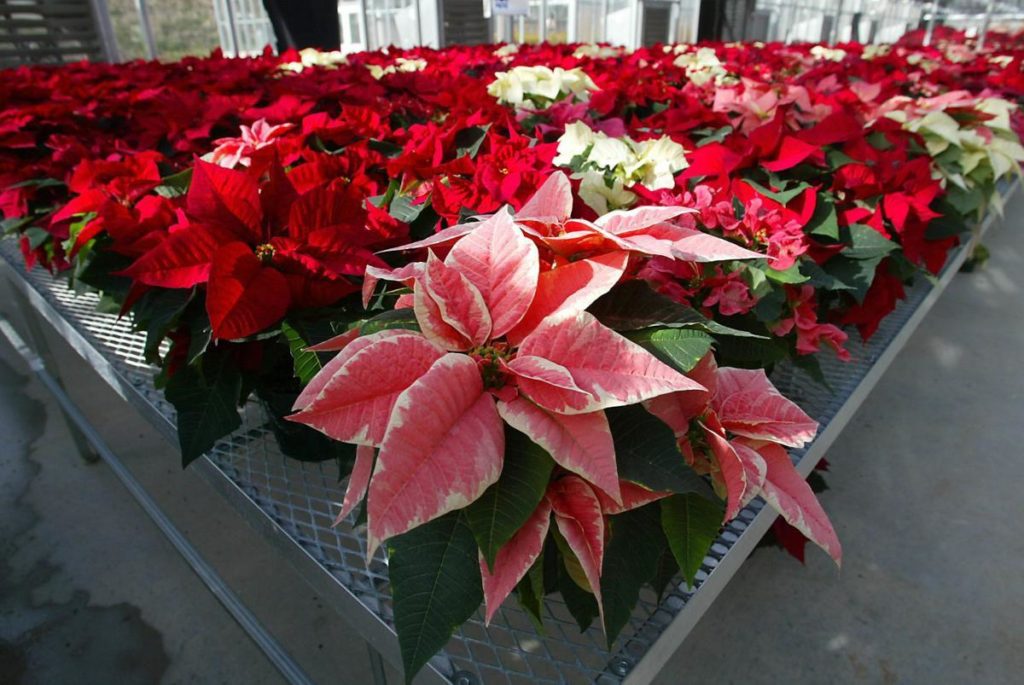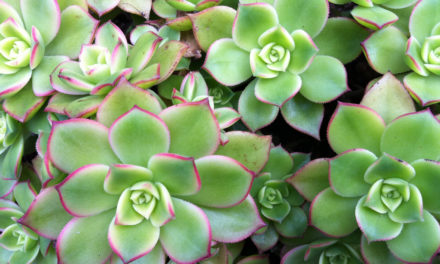It’s the time of year when tropical poinsettias abound, a feast for the eyes in church vestibules, restaurants and just about anywhere there’s holiday decor.
Do they pose a risk to people or pets? Not usually, but it’s a good idea to keep them out of reach of small children and the family cat or dog.
“Poinsettias get a bad rep. They can be toxic if they’re consumed. But they’re very bitter to taste, so the risk is low,” said Dixie Schneider, designer with Springs In Bloom florist, 318 E. Colorado Ave.
Quite a number of the bad-tasting leaves would have to be consumed to sicken someone. An Ohio State University study showed that a 50-pound child would have to eat more than 500 poinsettia leaves to have any side effects.
“Those beautiful flowers you’ve been so wary of keeping in your home during the holidays (lest they poison pets or children) are not toxic,” reports Live Science, citing a study that looked at nearly 23,000 cases of poinsettia exposure reported to poison control centers. None was fatal, and the most severe responses were stomach aches.

Photo Credit: Barbara Ann Spengler (Flickr).
The poinsettia fears probably were sparked, Live Science writes, by a 1919 case in which a child was said to have died after eating parts of a poinsettia, but neither the death nor the poinsettia connection was confirmed.
The milky white sap inside the plant’s stem can cause an allergic reaction — especially among those with latex (rubber) allergies, since latex and poinsettia plants share several proteins. Possible skin irritation from the sap may include redness, swelling and itchiness. It also can irritate eyes. Generally, these reactions don’t require medical treatment unless they are severe and persistent.
If you happen to rub poinsettia sap into your eyes, flush the eyes with water, says the Mayo Clinic. If your skin gets irritated, apply a cool compress.
If you’re allergic to avocados, bananas, chestnuts, kiwis and passion fruits, you might have a greater chance of being allergic to poinsettia plants, states the Mayo Clinic website.
When ingested by a cat or dog, mild vomiting or drooling may be seen, says the Pet Poison Helpline.
One plant probably won’t greatly affect people with pollen allergies, but a church full of poinsettias might be a different story. Indoor allergies can spike around Christmas, with buildings closed up.
The pretty “bloom” of the poinsettia is not its flower. The plant’s often bright red foliage is colorful bracts, or modified leaves. Its flowers are the small yellow parts centered at the top of the plant.
The shrub can grow to 10 to 15 feet tall in its native Mexico. Botanist and first U.S. ambassador to Mexico Joel Roberts Poinsett introduced the plant to the United States in 1828. After discovering the plant in Southern Mexico, he sent cuttings home to Charleston, S.C.
Today, more than 100 varieties of poinsettias and perhaps just as many color variations are available, including hues of pink, white, burgundy and marbled.

Hundreds of poinsettias in pink, white and red fill the University of Maryland Research Greenhouse Complex in College Park, Md., in 2003.
THE ASSOCIATED PRESS file
The plants are also known as “Lobster flower,” “La Flor de la Nochebuena” (flower of the Holy Night), or Easter flower.
Given the right conditions, store-bought poinsettias can last for months after Christmas.
“The secret with poinsettias is proper light and water. They’re native to Mexico, so that should tell you they kind of need a dry soil. Let them get a little dry between waterings, and make sure they’re in good filtered light. They are very sensitive to the cold, so it’s important to keep them away from drafts,” said Schneider with Springs In Bloom.
Keeping those tips in mind, it should be easy to get your poinsettias to last well into the new year, she said.
The Washington Post contributed to this report.

 Photo Credit: leskas (iStock).
Photo Credit: leskas (iStock). 



Comment on: Your Holiday Poinsettias Could Make You and Your Dog Sick